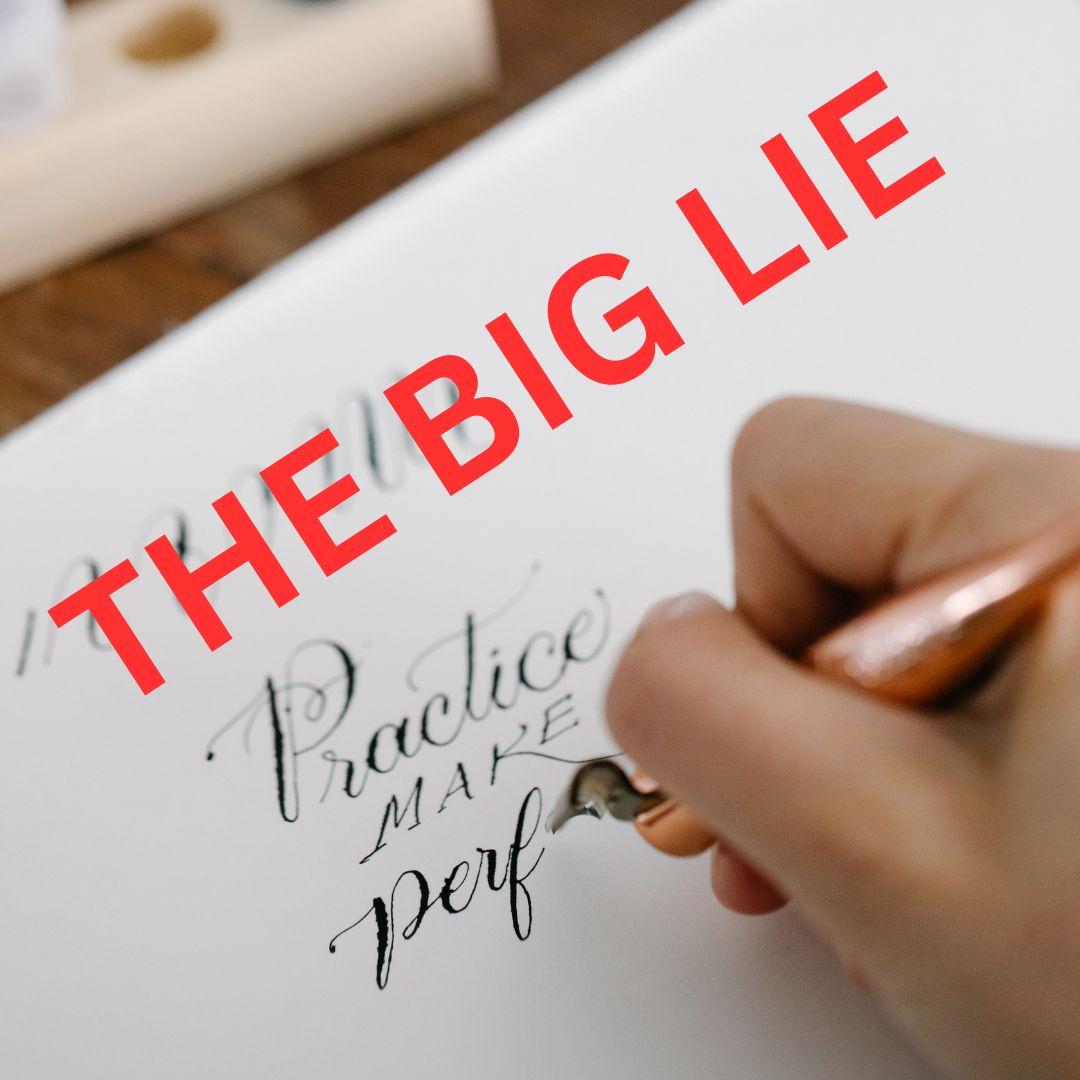The Big Lie
One of the biggest lies we’ve told students – not on purpose – is that practice makes perfect. Not true! Perfect practice makes perfect! But most students don’t know how to practice.
Early in my career I often had students fill out impressive practice logs with 10 hours a week of practice. Their playing…not so impressive. I ended up eliminating practice sheets completely and going to playing tests (more on that in a different chapter). My last decade or so in the classroom, I quit “requiring” outside of class practice. I’d venture to say that the majority of my students DO practice outside of school, but I tired of hearing excuses. I went to a strict playing assessment and have had HUGE success with it. Well over 90% of my students earn an A+ in class and complete the minimum goals I have set for them. Another 50%-75% exceed the goal! This chapter is about teaching kids to practice in class.
Take 30 seconds individually
One technique I use is called Take 30 seconds individually. If we are studying a new concept in a method book and it’s not coming together, I tell the students they have 30 seconds to practice it on their own. It actually becomes 60-90 seconds IF the students are using their time wisely, but the actual time doesn’t matter as much as the technique. During the 30 seconds, I wander the room answering quick questions, offering quick feedback, and making sure I get 100% participation. I often come across a student who is being lazy and not doing anything. That’s normal! They’re teens.
If they are wasting time and not practicing, I tell the student that this will become a quiz for them (meaning they will have to play it by themselves for a grade). I almost never have to actually do this. When I have, it’s usually a deeper issue where students don’t care about any class. When the student asks “Why are you going to make me play it by myself?” I answer “If you’re not practicing, I assume you are an expert at it already and I need to check your progress.” It takes a while to build this culture of 100% participation, but it can be done and is well worth it.
Play a run staccato
Often 16th note runs are slurred. By removing the slur and having the students play each note staccato, you can often determine if the problem is with technique or if it’s something else. If it’s something else, you can go on to the next technique.
16th note technique
Young musicians will often have a hard time playing 16th note runs cleanly. You can break this down in class.
Start by playing the 16th notes as quarter notes (or half or even whole notes if necessary). You can then determine if students even know the notes yet. Sometimes they don’t know the notes and now you can teach them. Sometimes they just can’t process the notes at performance tempo. You’re slowing it down so they can. After they have mastered the run as quarter notes, move to 8th notes and finally slow 16th notes.
Once students have mastered – or mostly mastered – the 16th note runs but it’s still not clean, have them play the 16th notes in groups of beats +1. For example, you might have them play the first beat of 16th notes plus the downbeat of beat ,
1-e-+-a 2.
Then beat 2 plus the downbeat of beat 3.
2-e-+-a 3.
Finally, include the entire measure +1
1-e-+-a 2-e-+-a 3-e-+-a 4-e-+-a 1
Have students also count aloud – and demonstrate for them – the strictness of the beat, 1-e-+-a 2-e-+-a 3-e-+-a 4-e-+-a rather than oneeeeanna twoeeanna like many students will want to count. Use your own counting method. I have never seen a bad one – they’re all different. I tend to use what I learned in the Army School of Music
Metronome – Yes or No
I have always been a big fan of the metronome. However, recently Colonel Palmatier came to work with my band. He shared why he does not use a metronome in group practice anymore. When he tried to use a metronome as a practice aid with The Army Band, he was met with resistance. But when he used a percussionist playing a rim tap or stick clicks, the band was fine with that. They told him it was because they wanted to follow a person, not a beat. We tried this in our own rehearsal. It worked beautifully! And it forced the percussionist to play with a more steady beat. You decide what works best for you.
James Divine is a retired music teacher. He still teaches half time at a charter school, spending the other half leading Professional Development and creating curriculum like Jazz From The Start to teach jazz and improv to young students.
